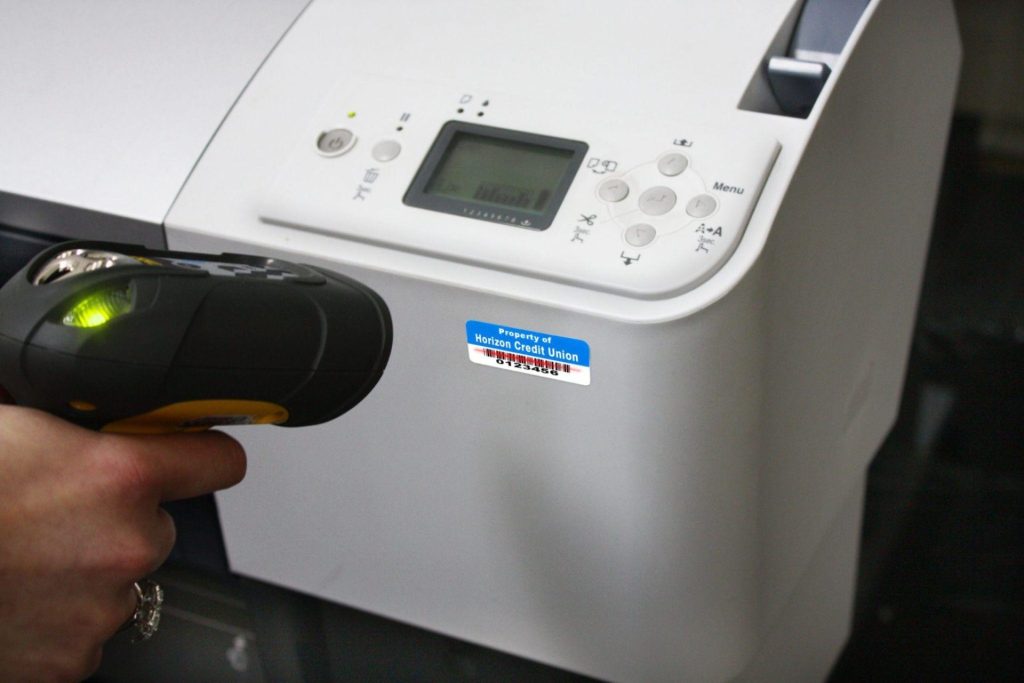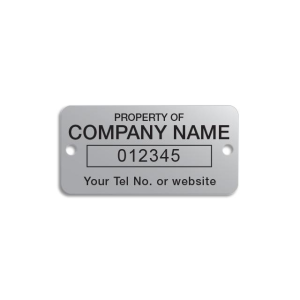6 Min Read
What Is Asset Tagging?
In the modern-day inventory management and asset tracking system, asset tagging stands as a fundamental practice that empowers businesses to streamline operations, enhance accountability, and gain valuable insights into their tangible resources.
Whether it’s a sprawling industrial complex, a bustling office environment, or a tech-savvy data center, asset tagging serves as the cornerstone for maintaining an organized and well-managed inventory system.

An asset tag typically consists of various elements that collectively provide essential information about the asset, which includes description, usage history, metrics, and custom information about an item. It serves as a primary link between the physical item and its digital record within an asset management system.
Types Of Assets That Can Be Tagged
An asset tagging process caters to various asset categories, adapting to their unique characteristics. These varied tagging approaches empower businesses to comprehensively manage assets and streamline operations while boosting the accountability and longevity of assets.
Broadly, physical assets can be categorized into two categories – fixed assets and moveable assets.
- Fixed assets, encompassing immovable and long-term resources, embrace real estate, infrastructure, and heavy machinery. Applying physical tags to these assets endure environmental rigors, aiding in depreciation tracking and compliance.
- Movable assets, like laptops, tools, and vehicles, find their mobility optimized through tagging. With a balance between durability and information density, asset tags on these items facilitate swift audits, maintenance schedules, and anti-theft precautions.
Types of Asset Tags
Choosing asset tags depends on the asset’s characteristics, mobility, and depth of information required.

By tailoring the tag to the asset’s specific needs, businesses can elevate their asset management and ensure consistent categorization. This aids managers in ensuring a streamlined asset-tracking system.
Following are some of the highly-used asset tags:
- Barcode Tags: Suited for highly mobile assets, barcode tags display a scannable unique identifier or an asset identification number. They’re cost-effective and allow swift data retrieval.
- QR Code Tags: Similar to barcodes, QR codes offer higher data capacity. These tags are ideal for assets requiring more information, like maintenance schedules. QR codes are versatile and accessible through smartphone apps.
- RFID Tags: Radio Frequency Identification (RFID) asset tags are excellent to track assets remotely. They’re suitable for both mobile and highly used assets that allow non-line-of-sight scanning.
- NFC Tags: Near Field Communication (NFC) tags are optimal for assets needing frequent updates, like maintenance records. With a mere tap, NFC-enabled devices can provide stored data to users.
- GPS Tags: Primarily used for highly mobile assets, GPS tags provide asset location in real-time. They’re an indispensable part of a robust asset tracking system, which includes items that are frequently on the move.
- Bluetooth Low Energy (BLE) Tags: BLE asset tags provide real-time location updates on the physical movement of assets. These tags are ideal for assets that require proximity-based monitoring and communication.
Smarter Asset Tracking With NFC Tags
Learn more about how NonStop Suite's NFC Asset Tracking Solution can help your Enterprise streamline operations to new heights.
Get A Free Product Tour
Benefits Of Asset Tagging For Businesses
Asset tagging systems are a strategic linchpin in modern business operations, offering an array of invaluable advantages.
Below-enlisted are some of the key benefits of a robust asset tagging system:
- Enhanced Asset Monitoring & Tracking: Asset tagging provides real-time visibility into the location and status of assets, ensuring efficiency in monitoring performance and tracking assets.
- Improved Accountability: Clear identification through asset labels and tags assigns responsibility for manual processes. This encourages proper asset utilization and reduces human error.

- Streamlined Auditing: During audits, asset tags expedite the verification process, ensuring accurate and swift assessments. This reduces audit-related stress and potential errors.
- Theft Deterrence: Asset tags act as a deterrent against theft and any unauthorized transfer of business equipment. This safeguarding measure not only protects assets but also minimizes disruptions and financial losses.
- Optimal Resource Allocation: Access to comprehensive asset data facilitates informed decision-making on repairs, replacements, calculate depreciation, and resource allocation.
- Regulatory Compliance: Industries subject to compliance regulations benefit from asset tagging by ensuring that assets adhere to stipulated standards, which minimizes legal complications.
- Efficient Maintenance: Asset tags allow for easy access to maintenance history, enabling timely servicing and prolonging asset lifespans. This fastens the verification processes and minimizes downtime.
How To Implement An Asset Tagging System
Efficient asset management begins with a well-structured asset tagging system. By following these essential steps, businesses can seamlessly implement an organized and effective approach to tracking and managing their valuable resources.
A. Conduct An Initial Asset Audit
Start by conducting a thorough audit of your stock to identify all assets within your organization. This process helps managers understand the scope of business inventory and ensures that no asset is overlooked.
B. Decide On A Consistent Tagging Structure
Next, establish a clear and standardized asset tagging program that includes elements such as unique identification tags, clear asset descriptions, and location codes. This structure ensures that all assets have the right asset tags.
C. Utilize Asset Tracking Software And Tools
Once a robust structure is in place, invest in effective asset tracking software and tools that promote data collection and organizational efficiency. For example, purchase tags such as barcode scanners, QR code generators, and cloud-based databases, which facilitate real-time updates and access to critical information.
D. Train Employees For Successful Implementation
Lastly, provide comprehensive training to employees on how to correctly affix asset tags, use tracking tools, and input data into the system. Emphasize the importance of accurate data collection and encourage a culture of responsibility for the assets they handle.
Best Practices For Asset Tagging
The following asset tagging best practices ensure that your asset tagging system operates seamlessly, enhancing efficiency and optimizing resource allocation.
- Identify The Purpose Of the Tag Clearly define the purpose of why you’re tagging assets. Whether it’s for tracking, maintenance, compliance, or depreciation, clearly stating and understanding the purpose streamlines the asset tagging process.
- Categorize And Identify Assets Categorize assets by type, value, or usage. Assign unique identifiers to each asset category, simplifying tracking and retrieval. For example, assigning identifiers to physical asset categories can help managers provide structure, organization, and a clear understanding of an organization’s inventory.

- Establish Well-Defined Procedures Establishing well-defined procedures is crucial for efficient asset management. Clear and structured protocols provide consistency, accountability, and a streamlined workflow.
- Allocate Dedicated Teams For Asset Tagging Appoint teams or individuals responsible for ensuring asset tags. Specialized teams ensure consistency and accountability.
- Optimal Tag Placement On Assets Asset tags must be placed where they’re visible and easily accessible without hindering asset operation. Properly placed asset tags contribute to accurate tracking, data consistency, and overall efficiency.
- Ensuring Tag Durability And Longevity Durable asset tags are a good choice since these tags withstand harsh environmental conditions, including exposure to moisture, extreme temperatures, chemicals, and physical wear and tear. This prevents premature tag deterioration and information loss.
- Using A Standardized Naming Convention Adopt a uniform naming convention for asset tags. Consistency simplifies data entry and retrieval across different assets. It eliminates confusion and allows employees to easily identify and understand assets, even across different departments or locations.

- Avoid Moving Untagged Assets Assets should only be moved once tagged. Moving untagged assets can lead to inaccurate information, which can affect data integrity and compromise the reliability of your asset management system.
- Incorporate Asset Life Cycles In Tagging Tagging assets with their life cycle stages provides a clear overview of where each asset stands in terms of usability. This aids in accurate financial planning for maintenance, repairs, and eventual replacements. This may include acquisition, maintenance, and disposal stages in asset tagging.
- Have An Asset Retiring And Replacement Plan Having an asset retirement and replacement plan is essential for maintaining efficient operations, managing costs, and ensuring the long-term sustainability of an organization’s assets. An effective plan may include details on replacement, disposal, or resale to maintain an up-to-date inventory.
Common Mistakes To Avoid
When implementing asset tagging, steering clear of common pitfalls is essential for effective management. Here are some common mistakes that you must avoid:
- Do Not Neglect Regular Audits And Maintenance Failing to conduct routine audits and maintenance checks can lead to outdated or inaccurate asset records. Regular assessments ensure that your asset database remains reliable and up-to-date.
- Do Not Use Non-Adhesive Or Low-Quality Tags Opting for non-adhesive or low-quality tags jeopardizes the longevity of your asset tagging system, which can lead to loss of information and poor efficiency. Invest in durable materials that withstand climatic conditions, preventing premature tag deterioration.

- Update Asset Information Promptly Procrastinating updates to asset information can lead to data inconsistencies. Promptly record changes such as asset movements, maintenance, or disposals to maintain accurate records.
Conclusion
In the modern business landscape, where efficiency and accuracy are of the utmost importance, the significance of asset tagging cannot be overstated. Adopting an effective asset tagging system is a strategic approach that optimizes operations, empowers decision-making, and safeguards valuable resources.
By adhering to best practices such as consistent tag placement, robust procedures, and the utilization of durable materials, organizations can forge a seamless asset tagging system.
If you are looking to elevate your asset management with an effective asset tagging system, consult The NonStop Group today.
Learn more!

